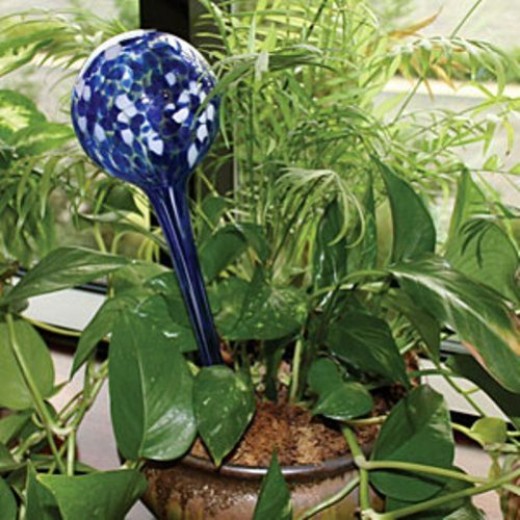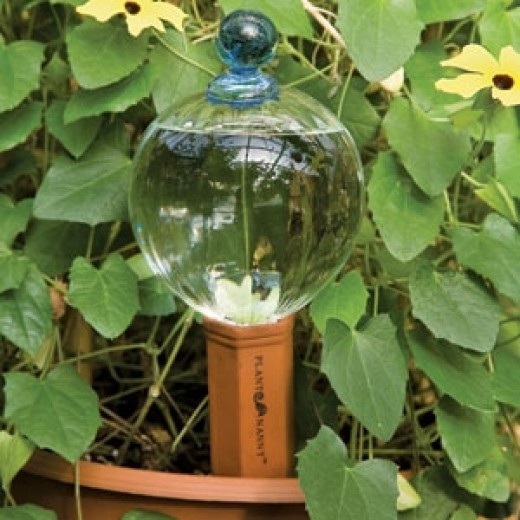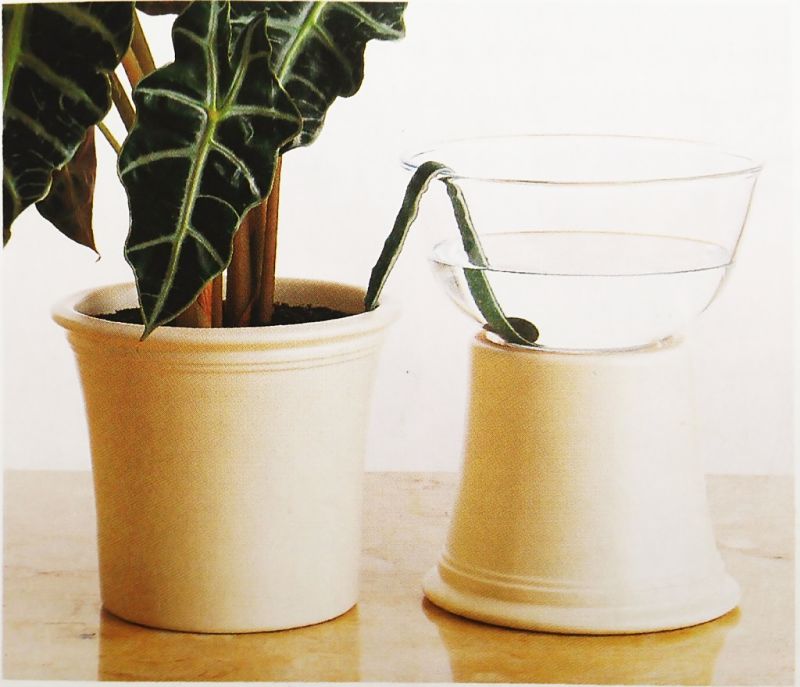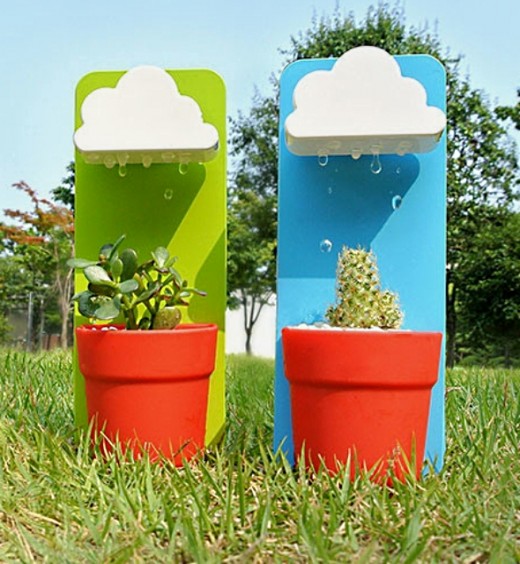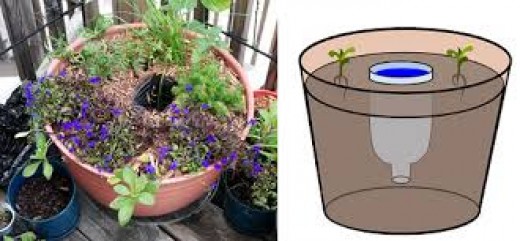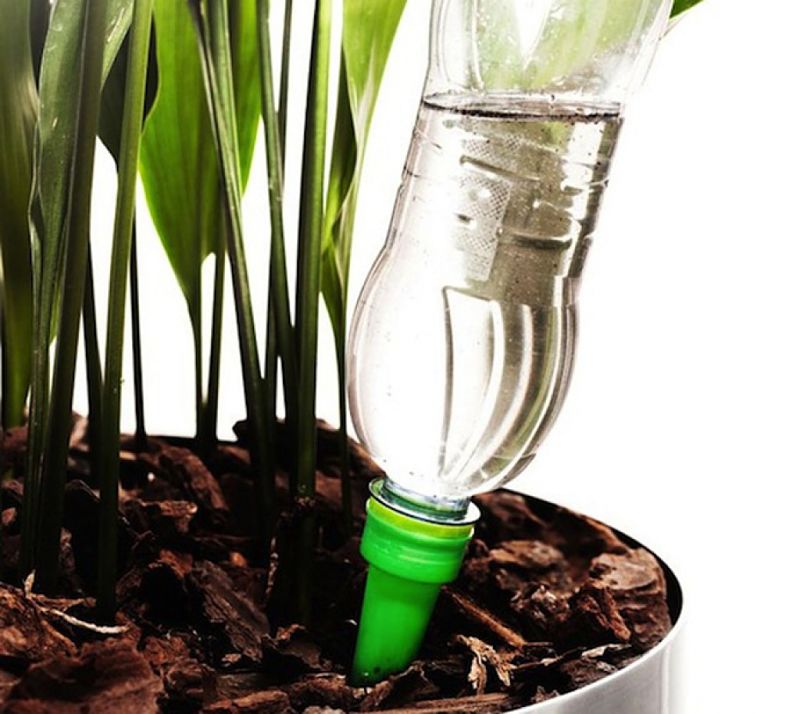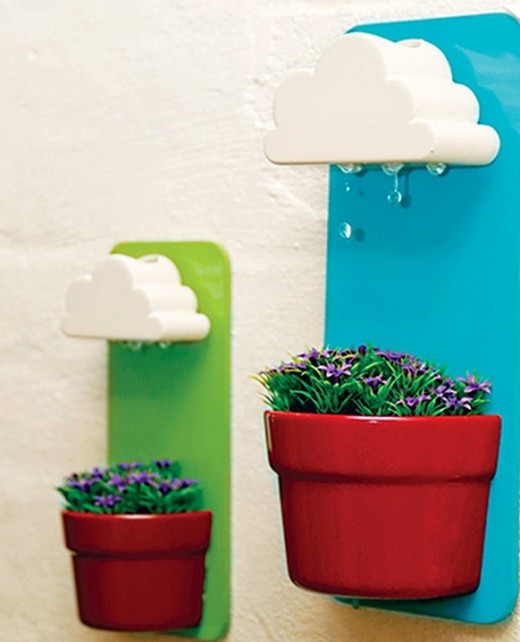Saving and Retaining Water in Pots and Garden Beds - A Practical Guide
One of the challenges of gardening, especially for plants in pots and containers, is ensuring there is always enough water. Starving plants of water checks their growth. So even if they do not wither and die, the plants will lose their vigor and stop growing quickly.
Lack of water can also affect the health of plants. You, the gardener, may not always be there to provide the water your plants need, when they need it.
Pots are particularly vulnerable to drying out quickly because many of them are porous. Similarly the amount of soil mix in the pot is very limited and this restricts the amount of water reservoir that is available. Also, the soil in pots is held above ground, where it is exposed to higher temperatures than the soil in the garden beds. Small garden plots around houses also have limited water reservoirs and are prone to drying out.
The good news is that there is a variety of ways you can retain water in pots, containers and small garden beds to keep them hydrated for longer. What plants you grow, and when you grow them, are important when gardening in dry areas. If you concentrate on drought tolerant species, you will have fewer problems.
There are a number of High-Tech and Low-Tech devices you can use to keep soil moist. This article discusses the best simple and practical options for saving and retaining water in pots, containers and small garden beds.
Controlling Drainage
Take time to think about how water is lost from pots in various ways. This includes drainage from the drainage hole, the walls of the pot and the upper surface of the soil that is exposed to the air. Most containers come with drainage holes at the base. Placing something over the holes to ensure they are blocked to keep the soil in and water to drain out is something that most gardeners do without thinking about it. You can use many things for this such as stones, pebbles, bark, fly-screen, broken pots, ash and all sorts of things. However, you can optimise water retention by choosing a filter that retains water and which slows the rate at which water is lost, without water logging the soil. Finer mesh filters will retain more water, but will impede drainage. One immediate solution is to use bark or other organic materials rather than stones or pebbles. You can also use a sponge or similar material that retains moisture. The larger the pot the deeper your drainage layer should be, as more water will collect in the growing media of a larger pot, requiring drainage.
Controlling Water Loss from the Pots Themselves
The pot or container material dictate whether you may need to take extra steps to help it retain water.
Terracotta pots, for example, are porous and absorb the water out of the growing media and release it to the air. To block this pathway you can line inside of the pots with plastic. Many pots and troughs come with inbuilt water reservoirs or saucers that catch and retain some of the water.
There are some very elaborate water reservoir pots that increase the amount of water that is stored below the pot.
Water-Retaining Crystals and Granules and Soils that Retain Water
Water-retaining crystals and granules can also be added to the soil in pots. These granules swell and retain water which can be tapped into by the roots of the plant. An alternative to granules is to place chopped up pieces of sponge into the soil. Finally, choose a soil mix which has lots of organic matter that stores water naturally.
Water Loss from the Soil Surface
Water is rapidly lost from the surface of the soil, particularly in hot dry weather. This can be prevented by covering the soil with a thick layer of mulch.
Watering
It is impossible to use a set-and forget regime for watering plants in containers, primarily due to weather, season and rainfall. While there are now sophisticated electronic systems with moisture meters linked to watering system, there are many simple ways of keeping your plants well hydrated. All you need is know when the roots are starting to dry out. The best rule of thumb is to water pots or garden beds when the top inch (2 cm) of soil feels dry. You can buy simple devices for indicating this. There are many moisture meters that you can poker in the soil to get a reading. Or you can simply poke your finger in the soil. There are even pots which have a reservoir in the base counterbalanced by a weight, so that when the reservoir is empty the pots tilt over. The other way is to check the water level in the saucer or reservoir under the pot.
Using Water Reservoirs and Wicks to Water Plants
Cloth wicks can be used to steadily trickle water between a large water reservoir and one or more pots. This is an excellent way to look after plants when you are on holidays. Similarly these system can be set up permanently. They are unobtrusive and don't create ugly eyesores like many of the watering systems. A wick works through capillary action and many porous materials can be used such as cotton, wool, various textiles. Capillary action is the way water in a reservoir below a plant rises through the soil to the roots of the plant.
Using Mini Water Reservoirs in Pots
There are many devices available for screwing into bottles to turn them into water reservoirs. Small holes in the lids or porous terracotta plugs can be used to slowly trickle water into the root zone of the plants. The advantage of these systems is that they extend the time between waterings and you can instantly see when the plants require watering. The simplest devices are to reuse plastic or glass bottles. Fill recycled plastic bottles with water and drill a small hole in the lids. Invert the bottle and bury it neck-deep in the soil next to your plant. The water will slowly trickle out the hole over a long period of time. Cutting the bottom off the bottle will mean the water drains quicker, but the bottles are easier to fill. Using a wick also provides slow watering. There is a huge range of commercial mini- reservoirs available.
Drip Irrigation Systems
With time and money you can set up drip irrigation systems with 'drippers' for each pot or plant. These work very well and can be controlled with timers or computer systems linked with soil moisture meters.
